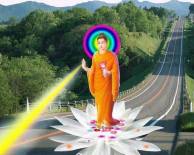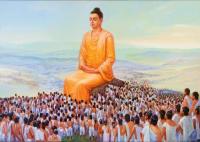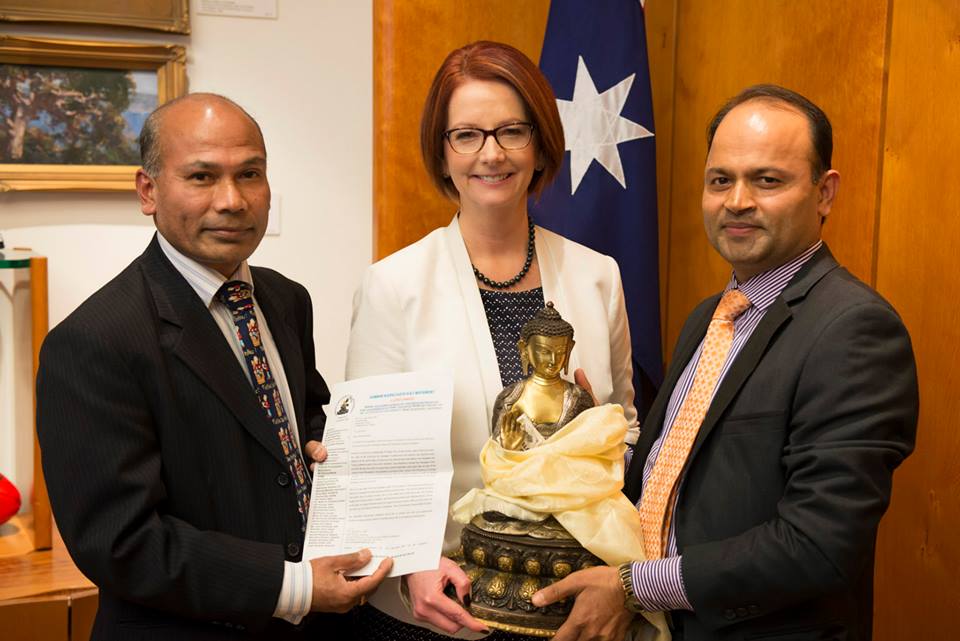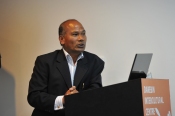Time ripe for signing a new Nepal-China Treaty of Peace and Friendship
Posted by Ram Kumar Shrestha on May 7, 2013
 [Nepal initiated an important proposal since 1993 that Buddha should be declared as “Light of the Universe” in place of ‘Light of Asia’ only. Dr. Bishnu Hari Nepal, former Vigya Member, Foreign Policy Draft Sub-committee, Legislative Parliament of Nepal, is strongly advocating it in the international level. International Relations and Human Rights Committee of the dissolved Legislative Parliament of Nepal had unanimously passed the vision making it a part of the campaign of the Nepalese Foreign Policy. This article is based on that concept.]
[Nepal initiated an important proposal since 1993 that Buddha should be declared as “Light of the Universe” in place of ‘Light of Asia’ only. Dr. Bishnu Hari Nepal, former Vigya Member, Foreign Policy Draft Sub-committee, Legislative Parliament of Nepal, is strongly advocating it in the international level. International Relations and Human Rights Committee of the dissolved Legislative Parliament of Nepal had unanimously passed the vision making it a part of the campaign of the Nepalese Foreign Policy. This article is based on that concept.] After going through the book, as a normal reader, I got an impression that Nepal that time, through her Great Son of the Soil, Buddha —the enlightened one, was able to contribute a great and influential philosophy with its impact on the pattern of life of the people -to our today’s great neighbors India and China in particular, Asia and the world in general. I remember the kind words from the great Buddhist philosopher of the 21st century, poet laureate of Japan, global peace initiator and President of Soka Gakai International (SGI) Daisaku Ikeda during our meeting in 1995 in Tokyo, “Japan was indebted to Nepal for their present culture, civilization, way of life, behavioral patterns, and thinking and even to the visionary approaches”. He had also added that it was through the flow of Buddhism -the enlightenment of the ancient Himalayan civilization. In response, I had said, “It is now — just the reverse- you are promoting peace and philosophy of Buddhism from the Far East to the West”. He had laughed.
After going through the book, as a normal reader, I got an impression that Nepal that time, through her Great Son of the Soil, Buddha —the enlightened one, was able to contribute a great and influential philosophy with its impact on the pattern of life of the people -to our today’s great neighbors India and China in particular, Asia and the world in general. I remember the kind words from the great Buddhist philosopher of the 21st century, poet laureate of Japan, global peace initiator and President of Soka Gakai International (SGI) Daisaku Ikeda during our meeting in 1995 in Tokyo, “Japan was indebted to Nepal for their present culture, civilization, way of life, behavioral patterns, and thinking and even to the visionary approaches”. He had also added that it was through the flow of Buddhism -the enlightenment of the ancient Himalayan civilization. In response, I had said, “It is now — just the reverse- you are promoting peace and philosophy of Buddhism from the Far East to the West”. He had laughed.
 To my satisfaction now Nepal China Society has done a credible job adding a brick in enhancing Nepal’s deep cultural ties with China and the world. Japan’s case, Buddhism started perhaps only from the sixth century via China and Korea.
To my satisfaction now Nepal China Society has done a credible job adding a brick in enhancing Nepal’s deep cultural ties with China and the world. Japan’s case, Buddhism started perhaps only from the sixth century via China and Korea.
On the contrary, the case of China, Buddhism entered to this country crossing the mighty Himalayas, through the Silk Road. The authors in this book argue that this was during the 1st or 2nd century CE. As a normal materialist Nepali thinker of the 21 st century, it gives me a sense of great pride and inspiration, and also impression to be looking for a second child of Buddha’s and Araniko’s repute for the 21st century Nepal. Specially, on the political grounds, today’s Nepal badly needs it!
For me Buddhism is a philosophy directly related to the way of life of the people. As a matter of fact, it was a materialist theory, alternative to the then existing religions. But during the course of time, Buddha being too much popular by his deeds, people started regarding Buddha himself as God and Buddhism as a religion. Hindus also took the opportunity and made him the incarnation of Vishnu! I do not believe in such superstitions. I believe in the strong scientific fact of explorations that he was the Prince of Lumbini-Kapilvastu of Nepal. But I respect the beliefs of the people.
FINDINGS IN BRIEF:
All the articles are the outcome of the serious study and research from the renowned authors. They can be divided as conglomeration of schools of thought of philosophy, culture, journalism, diplomacy, bipolarity and multi-polarity of relations among societies and nations particularly between Nepal and People’s Republic of China in today’s context.
For a normal reader like me, the ‘pearl of the beautiful gems’ was from Min Bahadur Shakya,Nepalese Artist Arniko in Yuan China. It has really given an in-depth knowledge about Arniko’s life (born in Lalitpur, Satya Mohan Joshi: p. 419) and work —linking exemplary ties of culture and development between Nepal and China. Shakya summarizes in p.443, “Thus his major contribution was the construction of three Stupas (White Pagoda in Beijing, Golden Pagoda in Tibet and another Pagoda in Wu tai-Shan, p. 416), nine Buddhist temples, two Confucian shrines, a Daoist temple, and countless number of images were created…”-not only in China but also in today’s Mongolia.
Other highly hard worked articles from Editor Prem Kumari Pant giving a journalistic touch, Hiranya Lal Shresta directly focusing on Nepal China Relations and detrimental effects of the Cultural linkages, Prof. Shanker Thapa also has done serious research on Sanskrit manuscripts and Expansion of Buddhism, and similarly, another renowned scholar Prof. Vijay Kumar Manandhar has explored about Master Buddhabhadra, another shining star of Nepal and Buddhism in China. In fact covering Buddhabhadra’s contribution, he has indebted the Nepalese people like Mr. Shakya did extensive research on Arniko.
Three Professors from the USA and three from India also have worked very hard on the cultural link with China.
COMMENTARY TO THE PIN POINT:
In the eyes of a normal reader, I missed Bhrikuti in the book in details like of Buddhabhadra and Arniko. If it had been included it would have been sun maa sugandha– better to have a comparative analysis of harit taaraa and swet taara. Please add the chapter in the next edition separately.
India and America are larger markets than that of Nepal. I would have better preferred to give more opportunity to Nepalese and Chinese scholars than others in our effort to write the part of the book focusing specifically to Nepal and China like 6 Nepalese scholars have done.
RECOMMENDATIONS IN SUMMARY:
To preserve our ethno-cultural, socio-economic, geo-political, diplomatic and natural heritage system, the time is ripe for Nepal and People’s Republic of China now to sign a new Treaty of Peace and Friendship in place of the old Treaty of Friendship of 1960, which replaced to that of 1956 and the latter replaced Treaty of Thapathali of 1856 with the change of time unlike with India.
Regarding today’s context, a proposed Cultural Treaty between the two countries Nepal and China are commendable and timely.
Gautam Buddha has been accepted as the apostle for peace and great philosopher of his time and until today. Therefore, the time has come that he should not be limited to Asia only — giving him the limited title of ‘Light of Asia’. Today, even the space has been chaotic. His philosophy of peace is still wanted even in the universe. Hence, in place of ‘Light of Asia’, he should be declared as ‘Light of the Universe’. For this, Nepal, China and India could jointly bring a resolution in the UN General Assembly. In this regard, Nepal forwarded an official proposal to the government of Japan during our Golden Jubilee Celebration of Nepal-Japan ties for the initiative, but Japan thought that it was a religious proposal, so, they replied that their constitution barred the proceedings on religious grounds. In fact, this is not a religious proposal. India was quicker to pick up the vision and was successful to get Gandhi’s Birthday on October 2 to be celebrated as the International Day of Peace endorsed by the UN in 2002. Buddha’s Birthday has been celebrated by the UN long time before Gandhi’s.
Commnts made by the author at the ” Buddhism: The Icon of Cultural Linkage with China” book launch ceremony held December 12, 2010
@Telegraph
















































Leave a comment